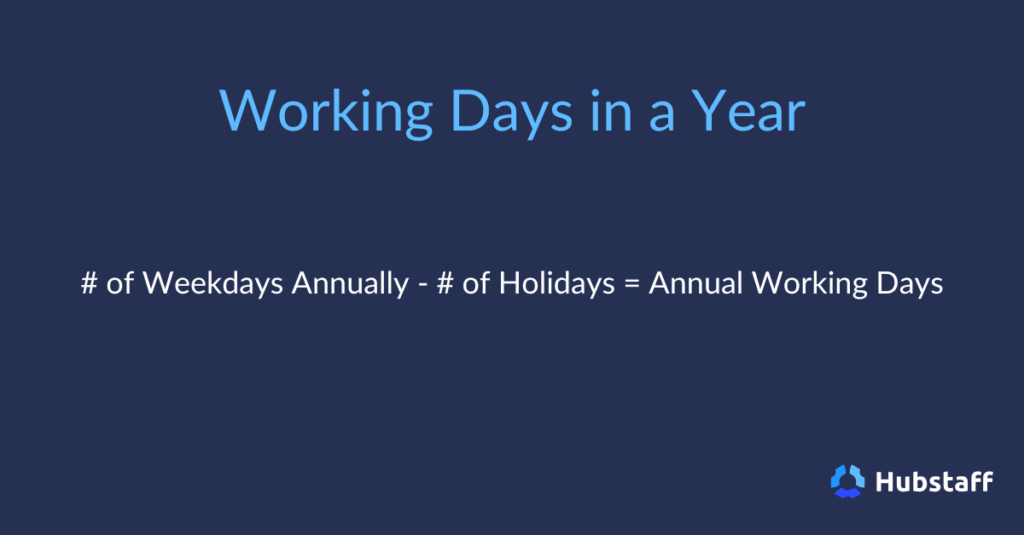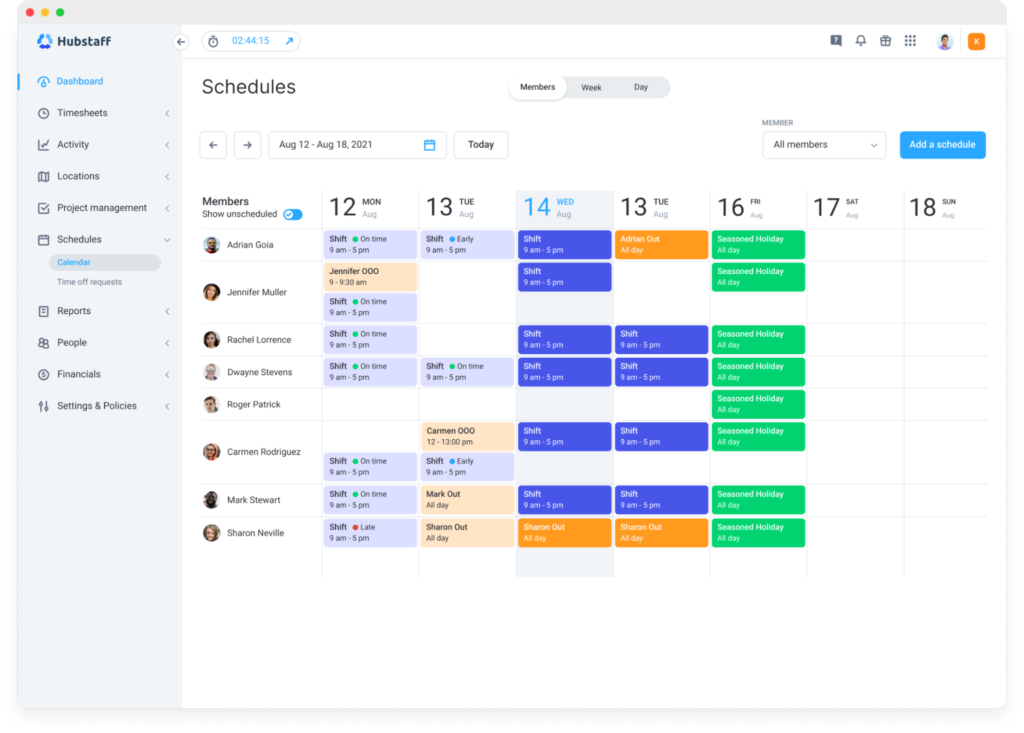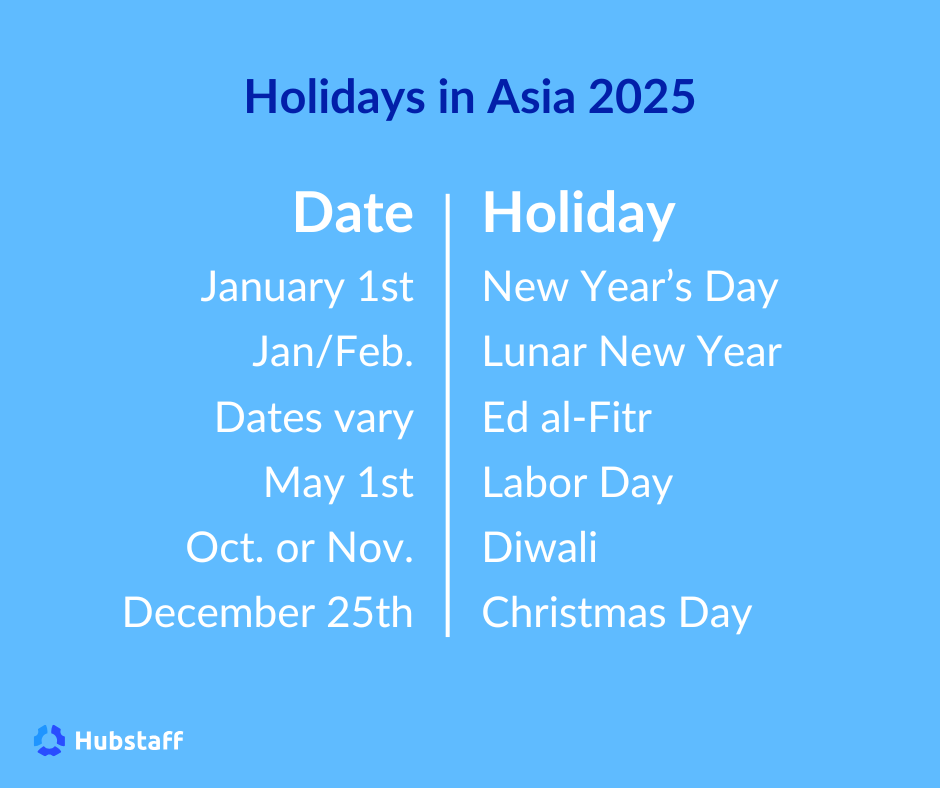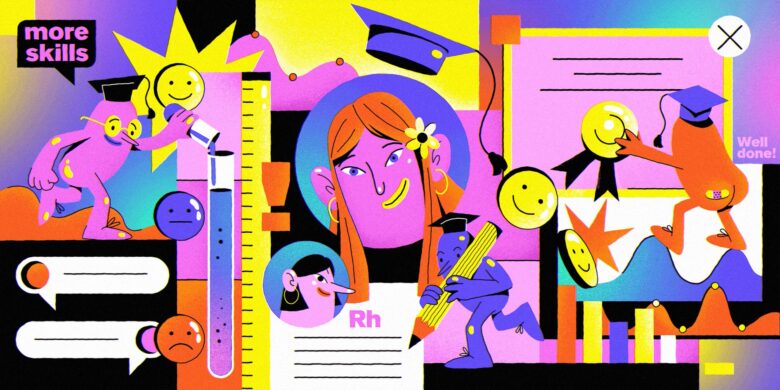2025 is right around the corner, so knowing the number of working days in a month is helpful for several reasons, like:
- Organizing schedules
- Making payroll adjustments
- Managing workloads
- Tracking project progress
- Planning PTO
Additionally, the number of business days in a month can directly impact your bottom line. For instance, making even a small mistake, like confusing working days with calendar days, can disrupt work-life balance or lead to unexpected business costs.
In this guide, we’ll discuss what constitutes a working day, week, or month to help you achieve better control over working hours, workloads, and finances. Let’s begin.
Boost your team’s efficiency with Hubstaff's productivity tools
What is a working day?
A working day is exactly what it sounds like: a day when an employee works or is scheduled to work.
While there are 365 days in a year, there are only 260 working days due to weekends, holidays, and other factors.
How many work hours in a day?
Typically, work days consist of approximately eight hours. However, depending on the company and industry, they can be defined in various ways:
- The “nine to five” workday. Strictly speaking, the working hours aren’t exactly 9:00 AM to 5:00 PM, but this refers to the traditional eight straight hours of work. Some companies may include the lunch break in the work schedule, while others may not.
- A full 24-hour period. Companies with flexible work hours may consider the full 24-hour period part of the work day. An example would be a customer support department with rotating shifts, where team members can pass along ongoing processes and tickets to the following shift. In this scenario, the end of the day extends to midnight on the following date.
Some states have overtime laws that mandate employers pay higher rates when employees work more than a specific number of hours a day.
For example, overtime rates begin at the eight-hour mark in California and Nevada and the 12-hour mark in Colorado.
What is a working week?
Traditionally, a standard work week runs from Monday through Friday. However, working on weekend days is common in many professions.
In any case, working weeks are less complicated than working days. In the U.S., a standard working week is 40 hours. Any work that exceeds 40 hours is considered overtime.
Working week vs. calendar week
Differentiating between a working week and a calendar week is straightforward.
Most consider the work week to span from Monday to Friday. A calendar week spans the full seven-day week from Sunday to Saturday.
Note: For work schedules with night shifts that span two different days during the last and first day of the week, it’s crucial to specify how hours will be divided. This helps ensure employees are correctly paid and that financial records are accurate.
What is a working month?
A working month is the collection of work days in a given month minus weekends and holidays. On average, there are four weeks or 20 working days a month.
Working month vs. calendar month
While a working month counts the days employees can work, a calendar month spans from the first day until the last. Of course, months vary in length (usually 30 or 31 days, except February).
Take the month of January 2025, for example. The calendar month is 31 days long, with eight weekend days and two public holidays:
- January 1st: New Year’s Day (Wednesday)
- January 20th: Martin Luther King Jr. Day (Monday)
To get the total number of days in a working month, take the length of the calendar month and subtract the weekends and public holidays (or federal holidays):
31 – 8 – 2 = 21
Therefore, the working month of January 2025 has 21 days.

How many average working days are in a month?
There are 20 to 22 working days (or approximately four work weeks) per month. Assuming an employee works full-time or eight hours daily, this translates to 160 to 176 hours monthly.
Some months have an above or below-average number of working days — especially when you factor in holidays. There are also a few other odd occurrences.
For instance, 2024 was a leap year. This means February had 29 days — a phenomenon that occurs once every four years. In February 2020, nine of the 29 days were weekend, and the 19th was a federal holiday (Washington’s Birthday), resulting in 19 work days.
In comparison, February 2023 only had 28 days. Eight were weekend days, with the 19th falling on a Sunday. As a result, it had 20 working days (more than February 2020) despite being one calendar day shorter.
On the other hand, a month can have as many as 23 working days. This occurs more commonly in March and August, which have 31 days and no holidays.
How many average working days are in a year?
On average, there are 250 working days in a year. The formula is simple: count the number of weekdays in the year and then subtract the number of holidays.

For example, 2024 had 262 weekdays and 11 holidays, resulting in 251 work days.
That said, this doesn’t account for other factors like:
- Paid time off
- State or country-specific holidays (if you have an international team)
- Emergencies
Maintaining a team-wide calendar is a reliable way to keep track of working days. Add each team member to a shared platform like Google Calendar and ask them to add their local holidays and time off so you can plan accordingly.
You can integrate Google Calendar with a time tracking tool like Hubstaff to streamline work hours tracking and payroll.

Employees can file PTO requests on Hubstaff, which will automatically synchronize with your team calendar. Hubstaff is also great for automating:
- Timesheets
- Payroll
- Invoicing
- Work orders
If manually calculating pay periods or using a business days calculator is not your thing, try Hubstaff with a free 14-day trial to eliminate admin time, frustration, and room for error.
Working days in 2025 in different locations
United States
In the United States, federal holidays are observed nationwide and impact the total number of working days each year. For 2025, the U.S. has 11 federal holidays:
- New Year’s Day: January 1st (Wednesday)
- Martin Luther King Jr. Day: January 20th (Monday)
- Presidents’ Day: February 17th (Monday)
- Memorial Day: May 26th (Monday)
- Juneteenth: June 19th (Thursday)
- Independence Day: July 4th (Friday)
- Labor Day: September 1st (Monday)
- Columbus Day: October 13th (Monday)
- Veterans Day: November 11st (Tuesday)
- Thanksgiving Day: November 27th (Thursday)
- Christmas Day: December 25th (Thursday)

Here’s the equation for the total working days in the US in 2025:
261 weekdays – 11 federal holidays = 250 working days
Remember that state-specific holidays (like Patriots’ Day in Massachusetts) can lead to fewer workdays depending on location.
Another example is Inauguration Day (January 20 following an election year) in Washington, D.C.
For most people in the U.S., 2025 has 250 workdays.
South America
South America is a diverse continent, but there are commonly celebrated holidays across multiple countries:
- New Year’s Day: January 1st
- Good Friday and Easter Sunday: Dates vary (March or April; major Christian holidays observed across the continent)
- Labour Day: May 1st (Recognized in every South American country)
- Christmas Day: December 25th
It’s impossible to draw a general conclusion about the working days in the region in a year.
Canada
In Canada, statutory holidays vary by province and territory.
- New Year’s Day: January 1st (Wednesday)
- Good Friday: April 18th (Friday)
- Canada Day: July 1st (Tuesday)
- Labour Day: September 1st (Monday)
- Christmas Day: December 25th (Thursday)
Baseline: 261 weekdays – 5 federal holidays = 256 working days
The country observes holidays specific to its provinces and territories as well.
Ontario
- Family Day: February 17th (Monday)
- Victoria Day: May 19th (Monday)
- Thanksgiving: October 13th (Monday)
- Boxing Day: December 26th (Friday)
Total: 256 baseline – 4 holidays = 252 working days
Quebec
- National Patriots’ Day: May 19th (Monday)
- Saint-Jean-Baptiste Day: June 24th (Tuesday)
- Thanksgiving: October 13th (Monday)
Total: 256 baseline – 3 holidays = 253 working days
British Columbia
- Family Day: February 17th (Monday)
- Victoria Day: May 19th (Monday)
- BC Day: August 4th (Monday)
- Thanksgiving: October 13th (Monday)
Total: 256 baseline – 4 holidays = 252 working days
Alberta
- Family Day: February 17th (Monday)
- Victoria Day: May 19th (Monday)
- Heritage Day: August 4th (Monday)
- Thanksgiving: October 13th (Monday)
Total: 256 baseline – 4 holidays = 252 working days
Manitoba
- Louis Riel Day: February 17th (Monday)
- Victoria Day: May 19th (Monday)
- Thanksgiving: October 13th (Monday)
Total: 256 baseline – 3 holidays = 253 working days
Saskatchewan
- Family Day: February 17th (Monday)
- Victoria Day: May 19th (Monday)
- Thanksgiving: October 13th (Monday)
Total: 256 baseline – 3 holidays = 253 working days
Atlantic Canada (New Brunswick, Nova Scotia, Prince Edward Island, Newfoundland, and Labrador)
- Family Day (NB, PEI): February 17th (Monday)
- Victoria Day: May 19th (Monday)
- Thanksgiving: October 13th (Monday)
Total: 256 baseline – 3 holidays = 253 working days
Territories
- Heritage Day (Yukon): February 21st (Friday)
- National Indigenous Peoples Day (NT, NU): June 21st (Saturday)
Total: 256 baseline – 2 holidays = 254 working days
United Kingdom
Public holidays (or bank holidays) vary by region in the United Kingdom.
England and Wales
- New Year’s Day: January 1st (Wednesday)
- Good Friday: April 18th (Friday)
- Easter Monday: April 21st (Monday)
- Early May Bank Holiday: May 5th (Monday)
- Spring Bank Holiday: May 26th (Monday)
- Summer Bank Holiday: August 25th (Monday)
- Christmas Day: December 25th (Thursday)
- Boxing Day: December 26th (Friday)
Total: 261 weekdays – 8 bank holidays = 253 working days
Scotland
- New Year’s Day: January 1st (Wednesday)
- 2nd January: January 2nd (Thursday)
- Good Friday: April 18th (Friday)
- Early May Bank Holiday: May 5th (Monday)
- Spring Bank Holiday: May 26th (Monday)
- Summer Bank Holiday: August 4th (Monday)
- St. Andrew’s Day: December 1st (Monday, substitute day)
- Christmas Day: December 25th (Thursday)
- Boxing Day: December 26th (Friday)
Total: 261 weekdays – 9 bank holidays = 252 working days
Northern Ireland
- New Year’s Day: January 1st (Wednesday)
- St. Patrick’s Day: March 17th (Monday)
- Good Friday: April 18th (Friday)
- Easter Monday: April 21st (Monday)
- Early May Bank Holiday: May 5th (Monday)
- Spring Bank Holiday: May 26th (Monday)
- Battle of the Boyne: July 14th (Monday)
- Summer Bank Holiday: August 25th (Monday)
- Christmas Day: December 25th (Thursday)
- Boxing Day: December 26th (Friday)
Total: 261 weekdays – 10 bank holidays = 251 working days
Like other countries, holidays and employer-specific policies can influence the number of working days in each region.
European Union
Holidays in the EU are not uniform.
Public holidays vary widely by country and region, making the number of working days range roughly from 248 to 253. However, here are public holidays that are widely observed throughout the region:
- New Year’s Day: January 1st (Wednesday)
- Good Friday and Easter Monday: April 18th and April 21st (dates vary with the Christian calendar)
- Labour Day: May 1st (Thursday)
- Christmas Day: December 25th (Thursday)

Baseline: 261 weekdays – 4 public holidays = 257 working days
If you’re calculating for a specific location, check that country’s calendar — or, even better, that city’s.
Asia
Asia is even more complex than Europe, primarily because it lacks a true equivalent to the European Union. The continent is home to a vast array of cultures, religions, and systems of timekeeping, and without a common union to unify them, the holidays observed across different countries can vary drastically.
Public holidays vary not only by country but also by region. Some holidays follow lunar or solar calendars, which means their dates shift each year.
However, a few holidays stand out because they’re celebrated in multiple countries.
- New Year’s Day: January 1st (celebrated almost everywhere)
- Lunar New Year: January or February (prominent in China, Vietnam, South Korea, and Singapore)
- Eid al-Fitr: Dates vary (marks the end of Ramadan, widely celebrated in Muslim countries)
- Labor Day: May 1st (observed in most Asian countries)
- Diwali: October or November (a major Hindu festival celebrated in India and Nepal)
- Christmas Day: December 25th (recognized in the Philippines, Singapore, and other Christian countries)

Calculating a baseline number of working days is impossible because Asia is so diverse — even the list above isn’t general enough. If you’re wondering about workdays in Asia, you’ll need to look country to country — or even to specific regions and cities.
Conclusion
A workday is one of the most basic units in workload management, but it’s also the foundation of successful project plans and engaged employees.
Knowing how many work days you have helps teams set goals, manage finances, and build a healthy, productive environment is crucial. Regardless of your industry, whether you work in-office or remote, or where you are in the world, we hope this guide can help.
FAQs
How many work weeks in a month?
On average, there are 4.34 weeks in a month, which is roughly four weeks (but some months will have five weeks).
How many business days in a week?
While there are seven days a week, The standard nine-to-five business week has five days: Monday, Tuesday, Wednesday, Thursday, and Friday.
How many hours in a year?
There are 8760 hours in a calendar year. Of course, that shouldn’t be the number of hours you work in a year.
When you factor in weekends and rest days for much-needed work-life balance, the average person works 40 hours per week (eight hours per day). If you keep that pace for the entire year (52 weeks), the standard work schedule is 2080 hours per year.
Most popular
The Critical Role of Employee Monitoring and Workplace Security
Why do we need employee monitoring and workplace security? Companies had to adapt fast when the world shifted to remote work...
15 Ways to Use AI in the Workforce
Whether through AI-powered project management, strategic planning, or simply automating simple admin work, we’ve seen a dramatic...
The AI Productivity Panel: Lessons From Leaders on What’s Working (and What’s Not)
When I moderated this AI productivity panel, I expected a solid conversation. What I didn’t expect was the flood of real-world i...
Employee Performance Dashboards: Templates, Tools, and Best Practices
Keeping track of how your team’s really doing can be tricky. Spreadsheets pile up, one-on-ones only tell part of the story, and...




